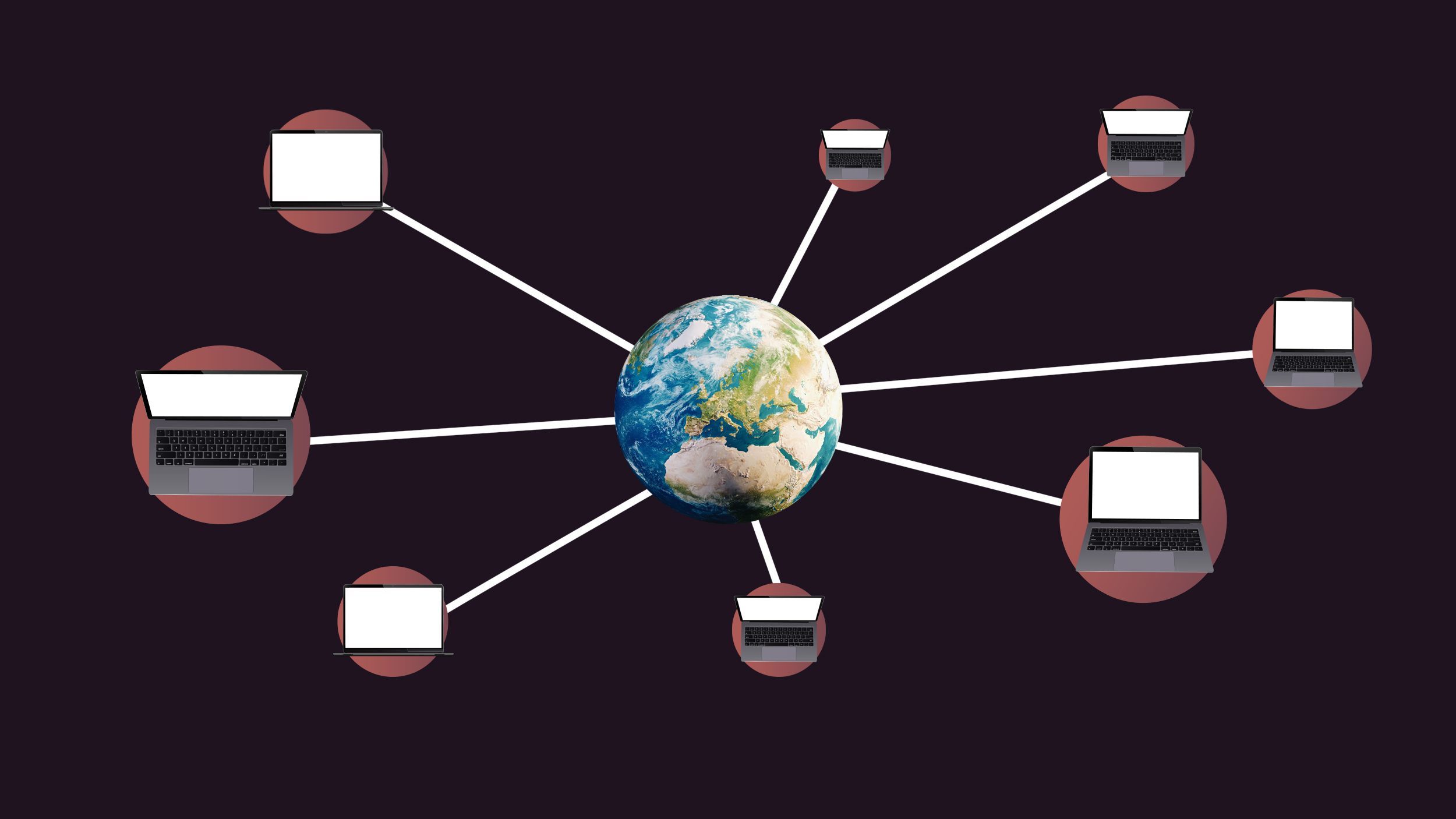Remote training: 10 best practices we learned during a pandemic

The arrival of the COVID-19 pandemic in early 2020 brought significant disruptions to everyday operations for businesses around the world. Busy office buildings became ghost towns as companies were forced to close their doors and attempt to carry on remotely.
At first, these changes seemed temporary, but the pandemic had more far-reaching implications than expected. Two years after the pandemic began, Pew Research Center found that most employees who can do their work remotely still are. In fact, employers who have called workers back to the office have faced stiff resistance, with some workers choosing to leave and find a more flexible arrangement elsewhere.
Since remote work is here to stay, let’s take a look at the lessons learned during the pandemic that can be applied to improve remote training strategies going forward.
Remote training – Challenges and best practices
Along with other challenges in the exodus to remote work, organizations have had to rethink their entire learning and development strategy. With very little time to prepare, many L&D teams had to transition operations into the virtual realm, such as moving in-person workshops to online video conferences.
As employees struggled to adjust to working remotely amidst the distractions of life at home, learner engagement suffered. In an article for Chief Learning Officer, Ken Blanchard cites a 2021 report in which over half of the learning professionals surveyed stated “more learner engagement is needed in their virtual and digital designs.”
Half of those surveyed stated “more learner engagement is needed in their virtual and digital designs.”
Disparate internet access for employees also created challenges when organizations debuted remote training. Employers quickly discovered that access to high-speed internet from home was not a given for many employees. This led to faulty web-conferencing and video learning experiences, which in turn, depleted training time due to the need to troubleshoot connectivity issues.
To meet some of the challenges of remote training, L&D departments began to hastily explore new learning technologies. Some organizations that previously relied on an LMS found their system lacked the features necessary for offering effective remote training, such as tools for collaboration amongst learners. But implementing a new LMS can take up to a year – a major setback when time is of the essence.
Out of these and other challenges came the revelation of several best practices for remote training. L&D teams have learned a lot since the start of the pandemic. Here are some of the key takeaways they discovered along the way.
Offer on-demand training
Navigating disruptions caused by the pandemic has made the flexibility of on-demand learning even more essential. Remote employees need training they can access at their own pace. Where employees once worked in the office, free of distraction from family, pets, and everyday life, many now manage all of these interruptions while juggling daily job responsibilities.
Especially in the context of remote training, on-demand learning programs should be highly usable, meaning they’re easily navigable and allow learners to function autonomously with little to no support. The technology that facilitates on-demand learning shouldn’t be so complex that it distracts learners from the content itself.
Learnings should be designed into clear, goal-oriented sequences.
Additionally, L&D teams should be strategic about the structure of on-demand learning programs. Although the flexibility of on-demand learning evokes a sense of freedom, it isn’t necessarily a free-for-all. Learnings should be designed into clear, goal-oriented sequences, or learning pathways.
Utilize social learning
One of the biggest drawbacks of remote work is the isolation that it brings, however, L&D teams learned a few creative workarounds during the pandemic. Using an LMS that includes tools for social learning – such as group chat features, newsfeeds, and leaderboards – can help teams continue interacting with one another.
In larger remote training sessions, saving time for Q&A as well as facilitating virtual breakout rooms can be an effective way to encourage discussion. In small groups, learners may find it easier to collaborate and exchange ideas. Breakout rooms can also create space for peer-led exercises.
Host virtual events
As organizations transitioned to remote training, in-person learning had to be thoughtfully redesigned for accessibility among geographically-dispersed team members. This led to the adoption of several best practices for hosting a live, virtual event.
Before events began, it became necessary to test audio, video, and screen sharing technology, obtain meeting access codes and dial-in information, and share any necessary documents or files with participants in advance. During live events, best practices now include having a designated moderator to manage discussion, recording the session for easy sharing afterward, and asking speakers to keep their webcams turned on.
Be prepared for the unexpected
L&D teams grew in agility during the pandemic as they learned to prepare for the unexpected – like technical difficulties on learners’ devices and trainers cancelling at the last minute due to a positive COVID-19 test. Many became familiar with developing back-up plans, and some even developed a response team to oversee adapting L&D offerings for remote workers.
One key takeaway was how to be strategic with limited resources, particularly scarce design time. When a crisis hits, converting all content into a virtual format is unrealistic, but teams can take an inventory of their learning offerings and give precedence to the most urgent priorities. Criteria for making those decisions might include how suitable the topic is for digital delivery and how many employees would be affected by its availability.
Create shorter learning interventions
The feasibility of hosting lengthy workshops and seminars waned during the pandemic. Many L&D teams began to explore microlearning approaches to remote training. Microlearning interventions – those which are roughly five to 10 minutes in duration – are accessible and easy to digest.

Since microlearning experiences are so brief, learning designers should focus on including only one objective per module. Avoid trying to maximize the learning time by stuffing as many different ideas into the module as possible. If designers overload that time with too much content, the core purpose can get buried.
…But offer them frequently
Because microlearning is delivered in short bursts, it allows a learner to take breaks and easily return to the information at a later time. Research shows this incremental learning actually helps people better comprehend information.
This is why frequent learning interventions can have a greater impact than a single, lengthy Zoom session. With periodic reinforcement, retention of the content is also improved – helping learners avoid the dreaded “Forgetting Curve.”
Keep learners motivated
Keeping remote learners motivated about training presented some challenges. But frequent communications about development opportunities via email, as well as broadcasting learners’ successes across messaging tools like Slack, inspired learners to engage.
Gamification proved to be another effective way to motivate learners. Many learning management systems allow employees to earn badges, share progress toward their goals, and engage in friendly competition with their peers. All of these are tangible incentives to continue learning in a remote environment.
Support mental health
During the pandemic, increased isolation while working remotely coupled with prolonged disruptions to everyday life brought detrimental impacts on employees’ mental health. Many organizations began to invest in services to mitigate this issue, like virtual counseling programs.
While the urgency of the pandemic’s threat has waned, the impact on mental health has continued.
L&D teams came alongside these efforts by curating wellness resources, such as content on how to manage stress, meditate, improve work-life balance, and recognize the signs of burnout. Learning professionals can expect such tools to remain important well into the future – while the urgency of the pandemic’s threat has waned, the impact on mental health has continued.
Offer cybersecurity training
Cyberattacks against businesses skyrocketed during the pandemic. As businesses rushed to develop remote workflows, a lack of appropriate security measures led to opportunities for cybercriminals to infiltrate networks, steal data, and disrupt business operations.
Individual employees became frequent targets of cyberattacks, often in the form of phishing emails. L&D teams quickly learned the necessity of offering training on how to identify threats, vulnerabilities, and keep the organization’s data safe while working remotely. As more and more employees continue to work remotely, such training will remain important in the years to come.
Foster resilience
The stresses caused by the uncertainty of a public health crisis took a major toll on the workforce. One soft skill that grew in importance because of these challenges is resilience.
Although resilience doesn’t come naturally, it can be taught. In the Big Think+ lesson below, positive psychologist Tal Ben-Shahar teaches how adversity can be an opportunity for growth, instead of something that breaks us.
A business is only as strong as its employees. Investing in workers’ resilience then, is a direct investment in the longevity of the organization as a whole – providing leaders with the confidence that their people will be able to weather the inevitable storms ahead.
Final note
By following the best practices above, L&D can continue to reap the benefits of remote training no matter what the future holds. Remote training offers big advantages to both learners and organizations alike – it can be designed in multiple modalities to meet employees’ diverse needs, and it comes with added convenience and affordability for L&D teams.
With remote training, organizations can ensure that even in the case of future pandemics, natural disasters, and other major disruptions, learning and development can carry on in full force.





